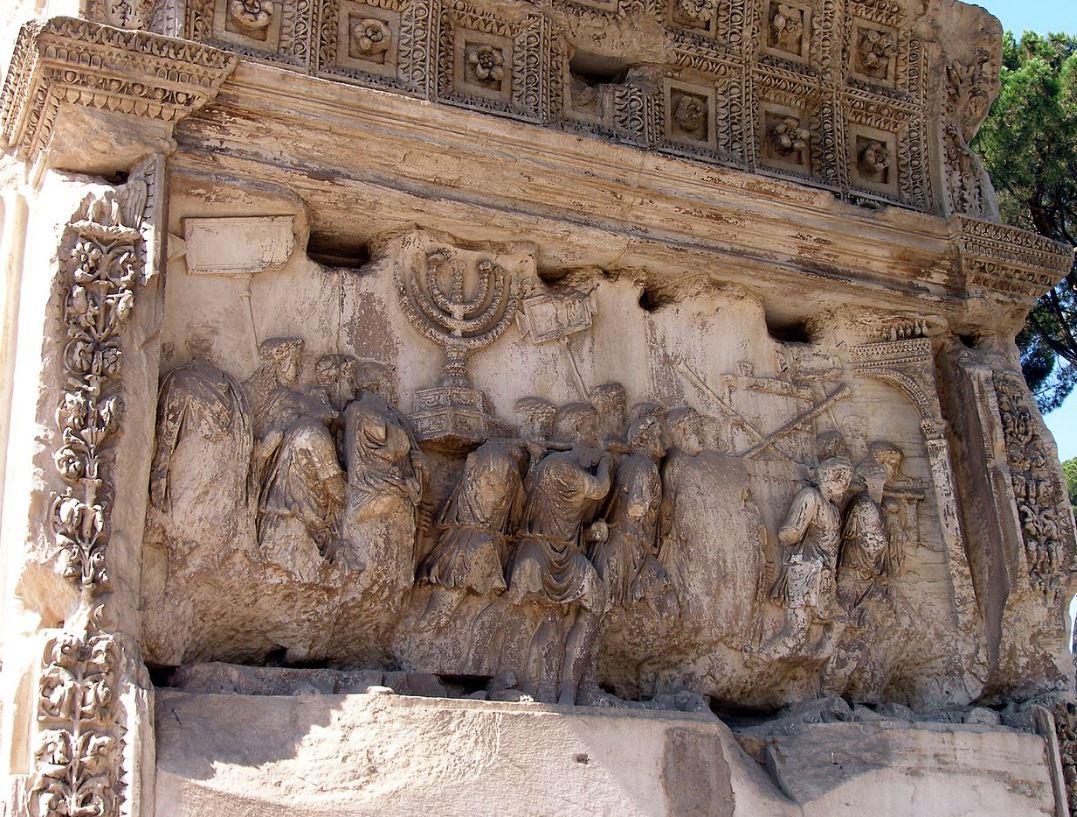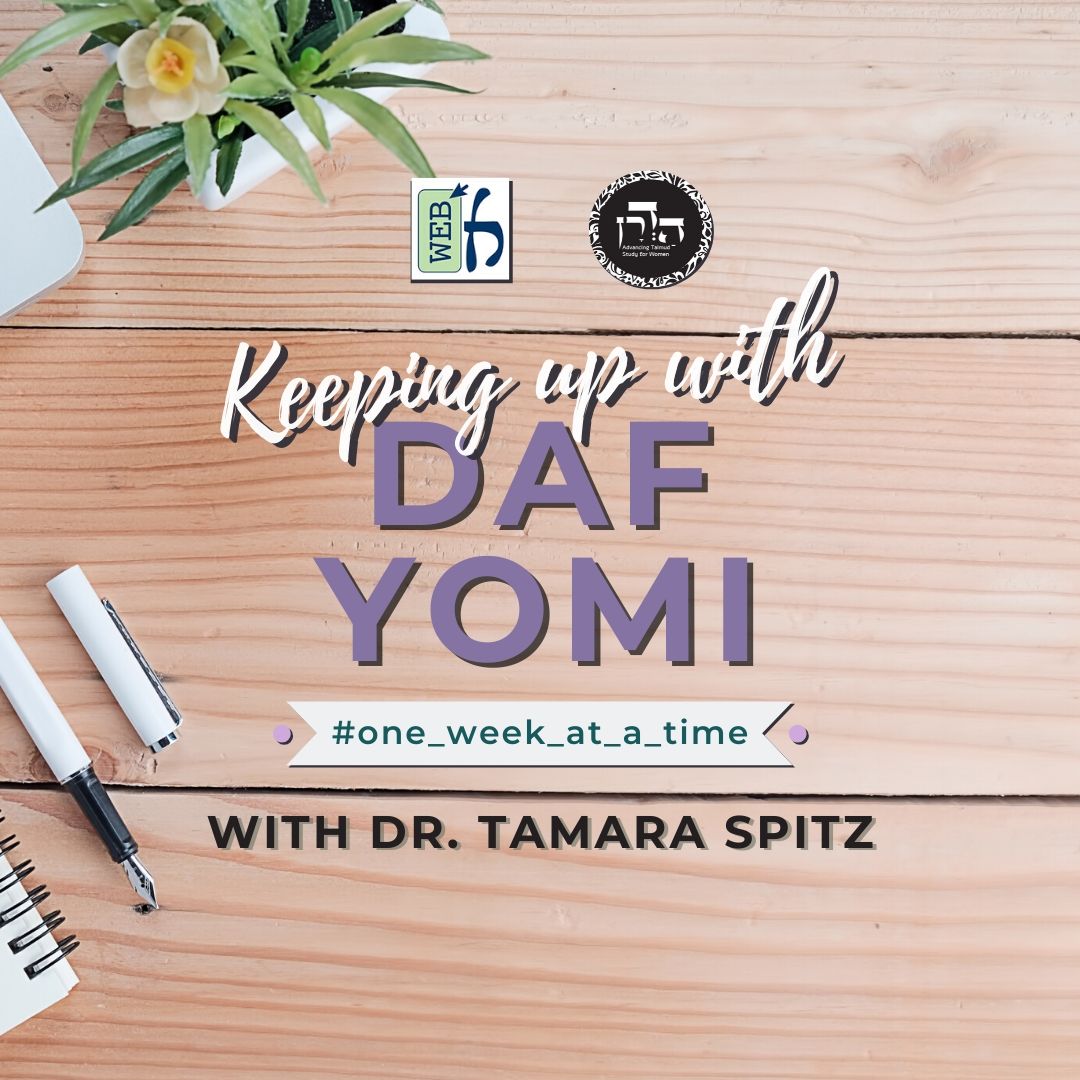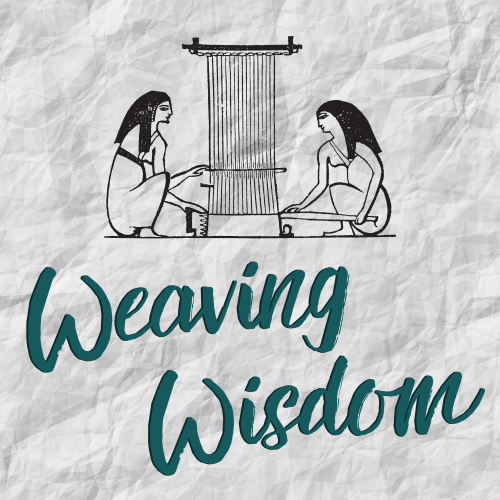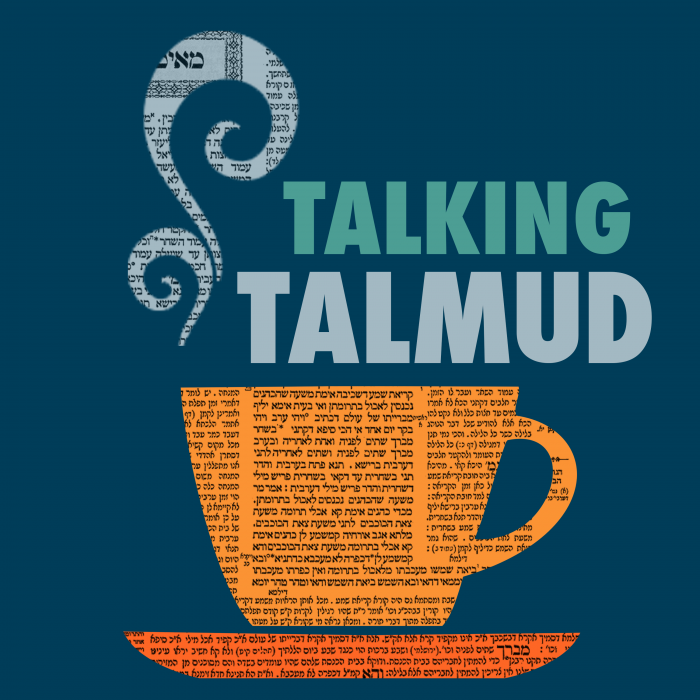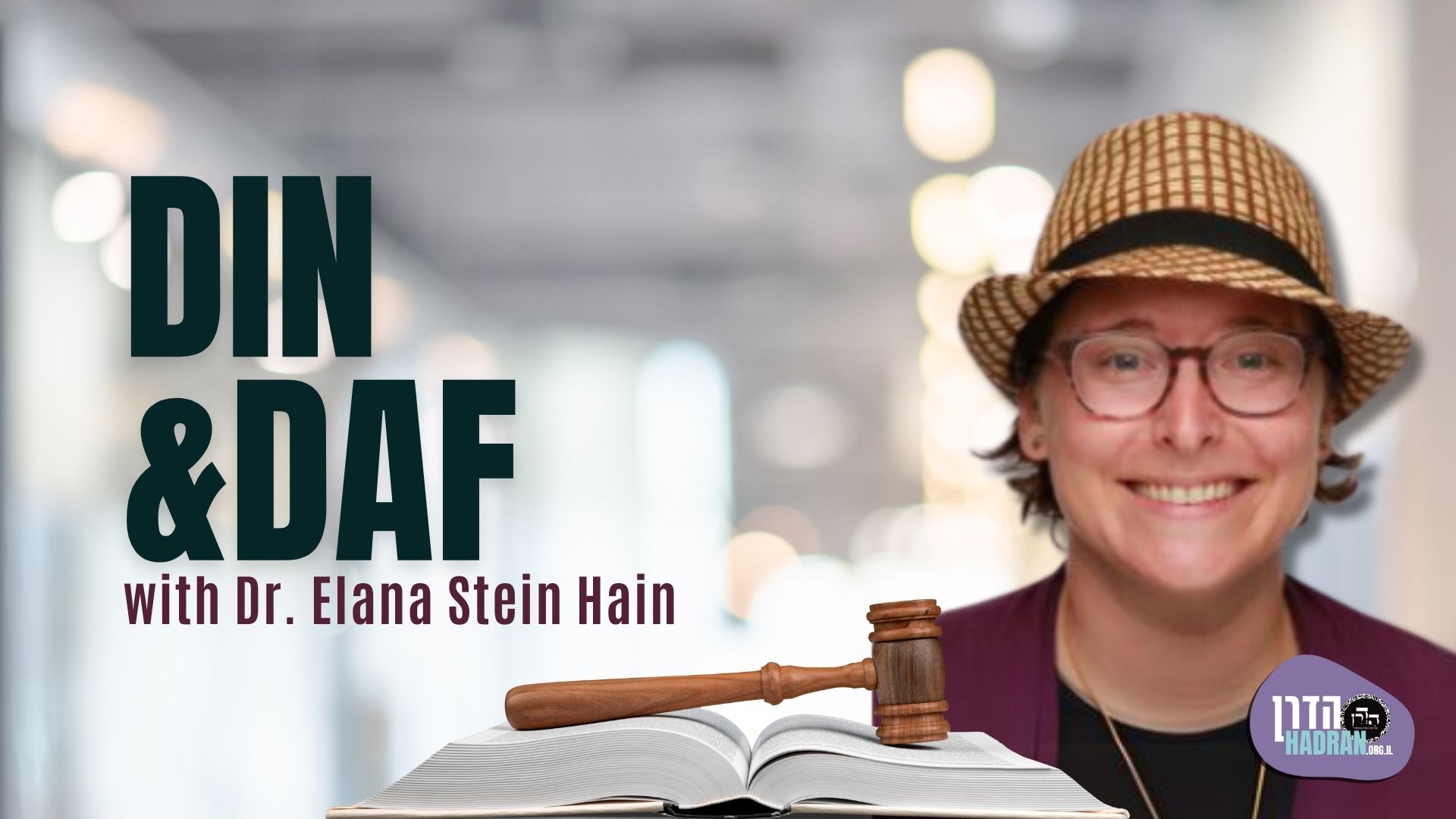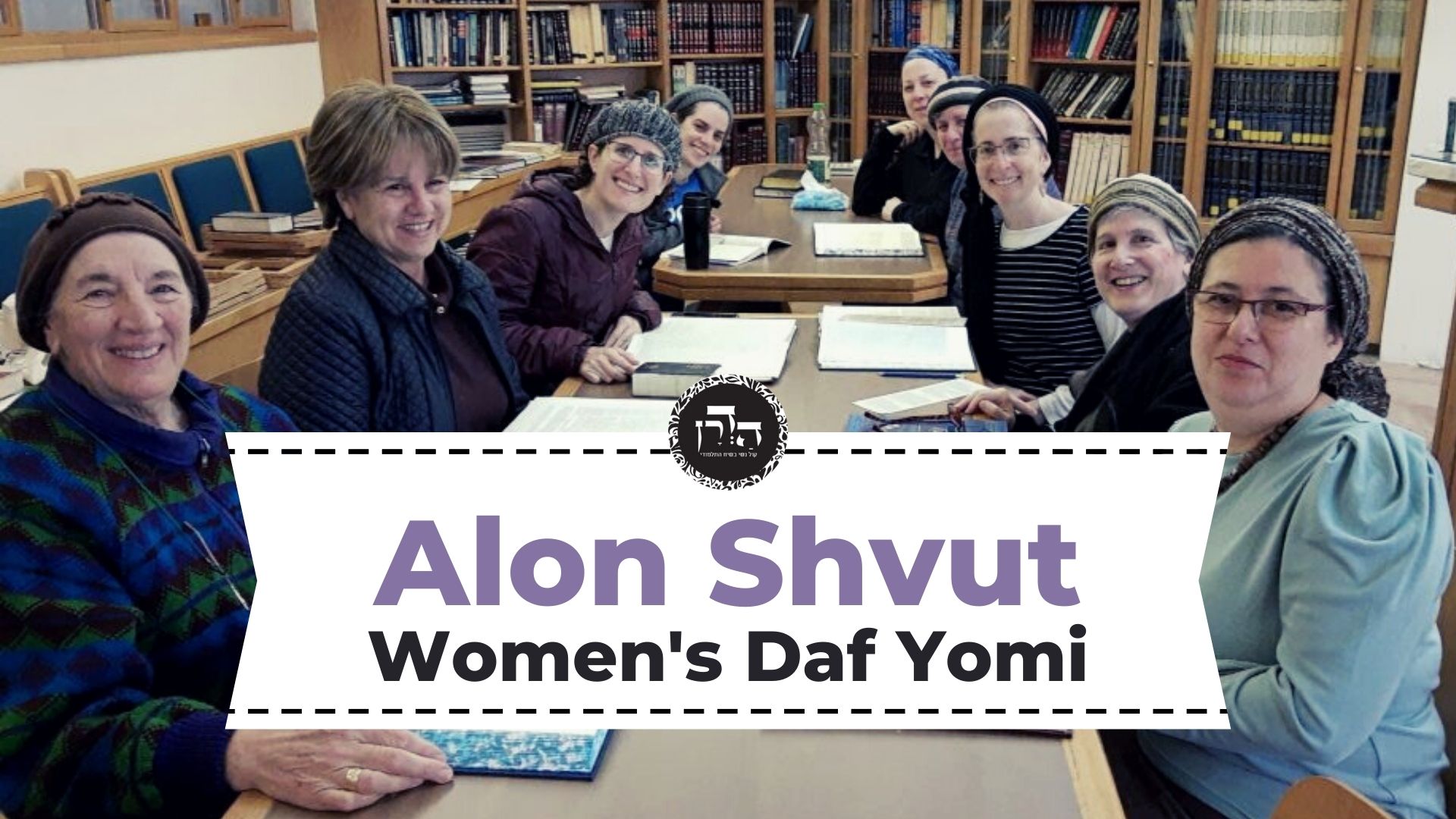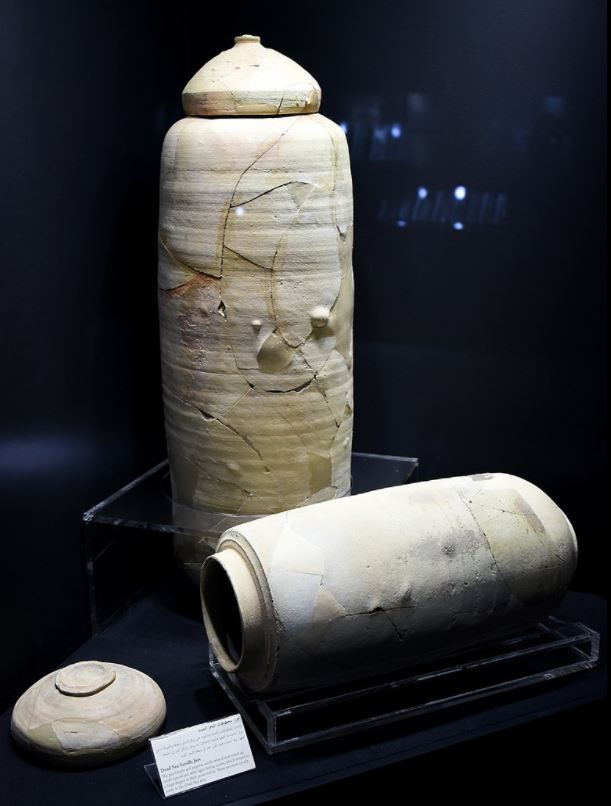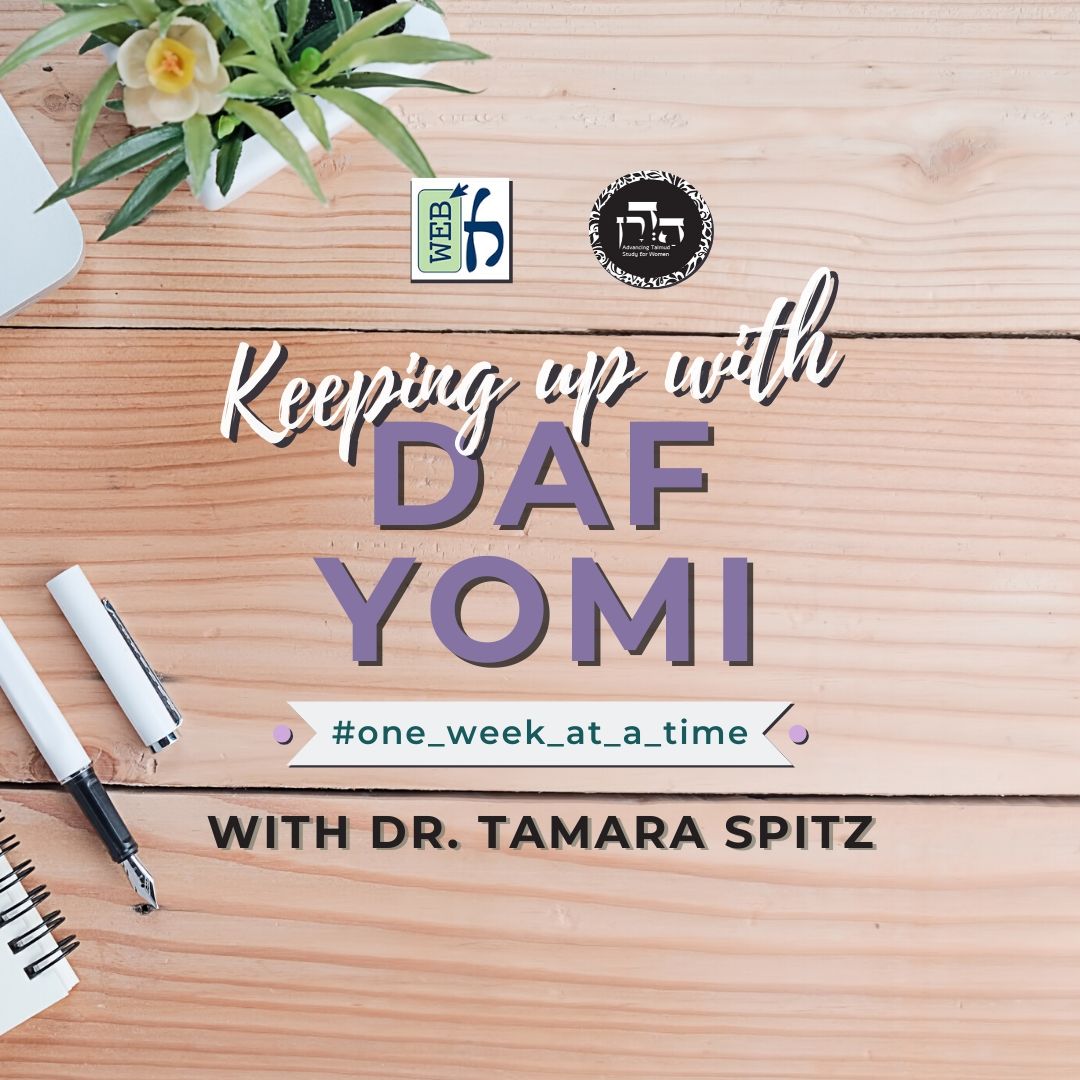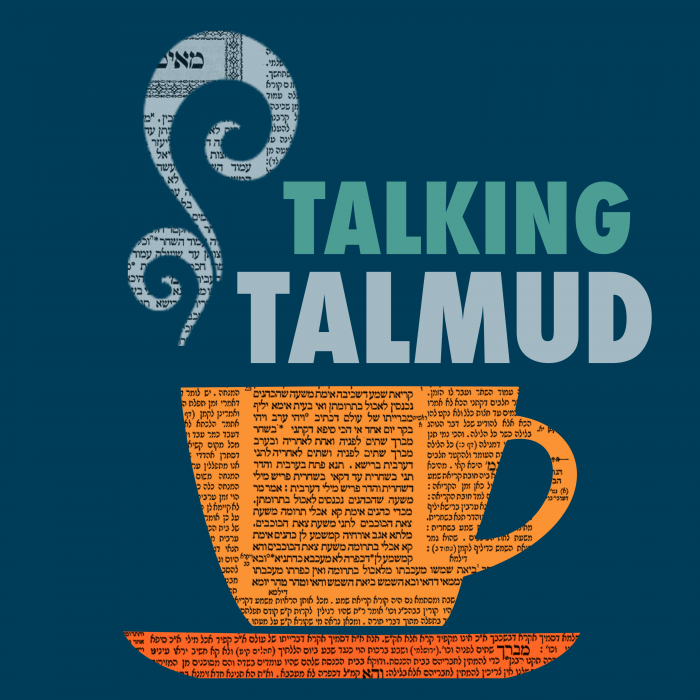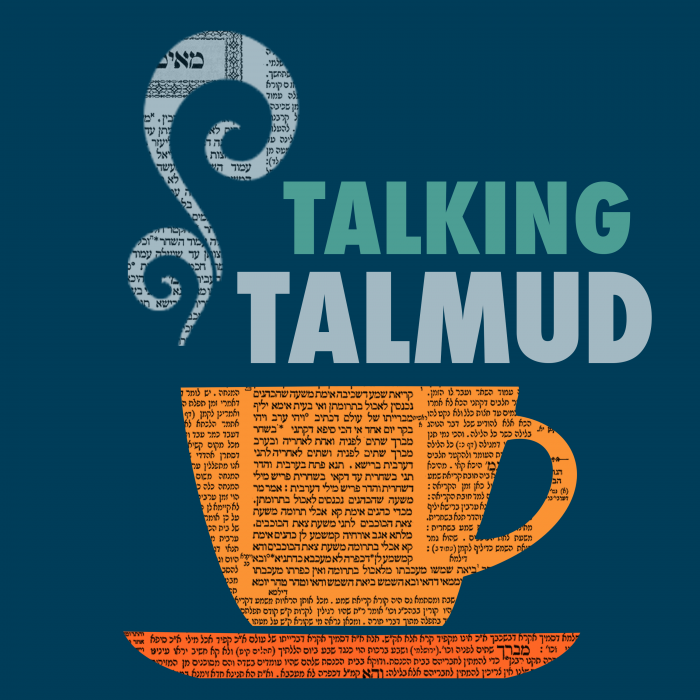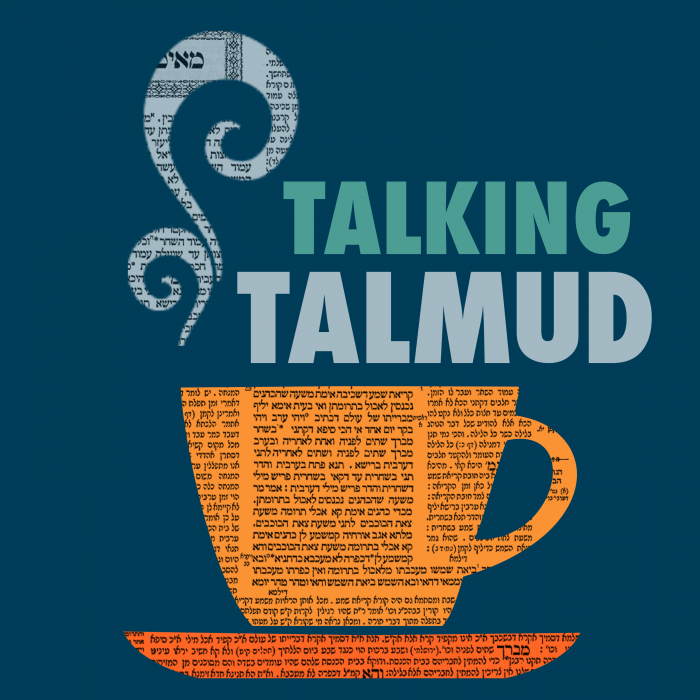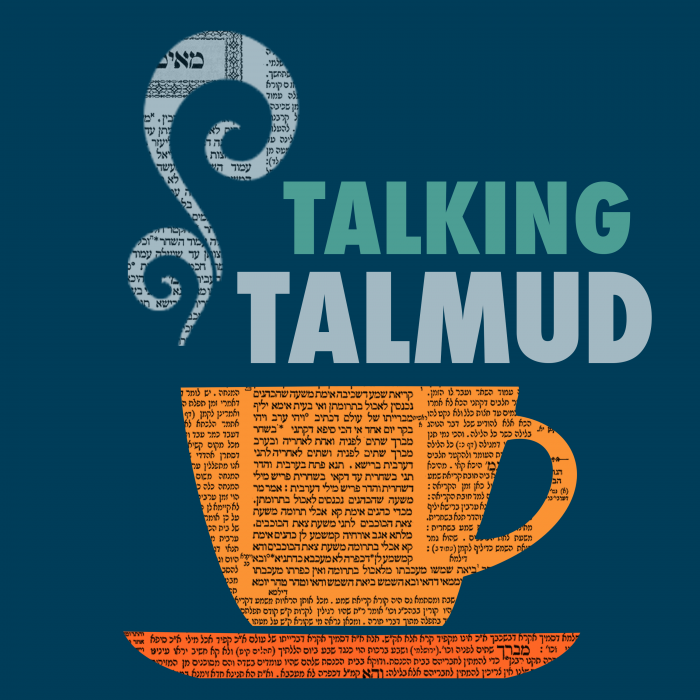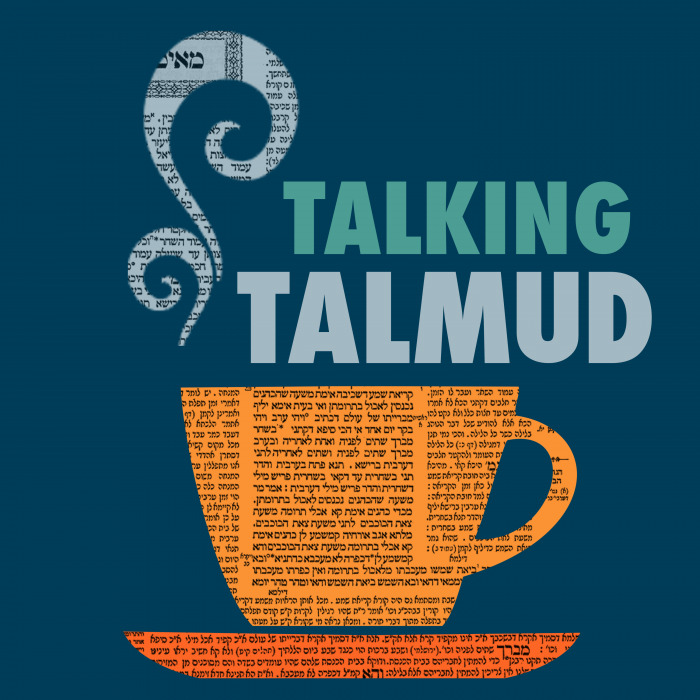Various laws relating to mezuzot are discussed. Where? In what positions? On what types of entrances?
This week’s learning is sponsored by Robert and Paula Cohen in loving memory of Joseph Cohen, Yosef ben Moshe HaCohen, z”l. “He was hard working, loved to sing, esp. as a chazan, and was very dedicated to his family and community.”
Want to dedicate learning? Get started here:

Today’s daily daf tools:
This week’s learning is sponsored by Robert and Paula Cohen in loving memory of Joseph Cohen, Yosef ben Moshe HaCohen, z”l. “He was hard working, loved to sing, esp. as a chazan, and was very dedicated to his family and community.”
Today’s daily daf tools:
Delve Deeper
Broaden your understanding of the topics on this daf with classes and podcasts from top women Talmud scholars.
New to Talmud?
Check out our resources designed to help you navigate a page of Talmud – and study at the pace, level and style that fits you.
The Hadran Women’s Tapestry
Meet the diverse women learning Gemara at Hadran and hear their stories.
Menachot 33
בְּטֶפַח הַסָּמוּךְ לִרְשׁוּת הָרַבִּים, כַּמָּה דִּמְרַחַק מְעַלֵּי, קָא מַשְׁמַע לַן.
in the handbreadth adjacent to the public domain, perhaps the further the mezuza is from the inside of the house the better, and one may affix it even fully outside the airspace of the entrance. To counter this, Shmuel teaches us that the mezuza must be within the airspace of the entrance itself.
וְאָמַר רַב יְהוּדָה, אָמַר שְׁמוּאֵל: כְּתָבָהּ עַל שְׁנֵי דַּפִּין – פְּסוּלָה. מֵיתִיבִי: כְּתָבָהּ עַל שְׁנֵי דַּפִּין וְהִנִּיחָה בִּשְׁנֵי סִיפִּין – פְּסוּלָה, הָא בְּסַף אֶחָד – כְּשֵׁרָה! רְאוּיָה לִשְׁנֵי סִיפִּין קָאָמַר.
And Rav Yehuda says that Shmuel says: If one wrote a mezuza on two sheets it is unfit. The Gemara raises an objection from a baraita that teaches: If one wrote a mezuza on two sheets and placed it on the two doorposts of the entrance, it is unfit. The Gemara states the objection: By inference, if the mezuza was affixed on one doorpost, it is fit, despite the fact that it is written on two sheets. The Gemara answers: The baraita is not referring to a case where one affixed the mezuza on two doorposts. Rather, the baraita is saying that if it was written on two sheets in such a manner that it is fit to be affixed to two doorposts, i.e., there is a space between the writing of the first and second passages, so that one can separate the two sheets for different doorposts, it is unfit. This is in accordance with the statement of Rav Yehuda, citing Shmuel.
וְאָמַר רַב יְהוּדָה, אָמַר שְׁמוּאֵל: בִּמְזוּזָה, הַלֵּךְ אַחַר הֶיכֵּר צִיר. מַאי הֶיכֵּר צִיר? אָמַר רַב אַדָּא: אֲבַקְתָּא. הֵיכִי דָּמֵי? כְּגוֹן פִּיתְחָא דְּבֵין תְּרֵי בָּתֵּי, בֵּין בֵּי גַבְרֵי לְבֵי נְשֵׁי.
And Rav Yehuda says that Shmuel says: The halakha is that a mezuza must be affixed to the doorpost on its right side, and the right side is determined by the direction from which one enters the room. With regard to a mezuza, when deciding which side is the right side, one should follow the indication of the hinge. The Gemara asks: What is the indication of the hinge? Rav Adda said: The socket into which the hinge is inserted. The room with the socket is considered the inside room, and the mezuza is affixed to the side which is on one’s right when entering that room. The Gemara asks: What are the circumstances, i.e., in what kind of case was this guideline to follow the indication of the hinge necessary? The Gemara answers: This indication is necessary in a case where there is an entrance that is between two houses, e.g., between a room for men and a room for women, as in such a situation the direction of the entrance is unclear.
רֵישׁ גָּלוּתָא בְּנָא בֵּיתָא, אֲמַר לֵיהּ לְרַב נַחְמָן: ״קְבַע לִי מְזוּזְתָּא״, אָמַר רַב נַחְמָן: ״תְּלִי דַּשֵּׁי בְּרֵישָׁא״.
The Gemara relates: The Exilarch built a new house. He said to Rav Naḥman: Affix mezuzot for me in the house. Rav Naḥman said: First erect the doors, so that I can affix the mezuzot in the appropriate places, according to the placement of the hinges.
אָמַר רַב יְהוּדָה, אָמַר רַב: עֲשָׂאָהּ כְּמִין נֶגֶר – פְּסוּלָה. אִינִי? וְהָא כִּי אֲתָא רַב יִצְחָק בַּר יוֹסֵף אָמַר: כּוּלְּהוּ מְזוּזָתָא דְּבֵי רַבִּי כְּמִין נֶגֶר הֲווֹ עֲבִידָן, וְהַהִיא פִּיתְחָא דְּעָיֵיל בֵּיהּ רַבִּי לְבֵי מִדְרְשָׁא לָא הֲוָה לַהּ מְזוּזָה! לָא קַשְׁיָא: הָא דַּעֲבִידָא כְּסִיכְּתָא, הָא דַּעֲבִידָא כְּאִיסְתָּוִירָא.
Rav Yehuda says that Rav says: If one fashioned a mezuza like a bolt, i.e., he wedged it into a hole in the doorpost of a gate, or affixed it to the doorpost horizontally, it is unfit. The Gemara raises a difficulty: Is that so? But when Rav Yitzḥak bar Yosef came from Eretz Yisrael to Babylonia, he said: All the mezuzot in the house of Rabbi Yehuda HaNasi were fashioned like a bolt, and he also said: That entrance by which Rabbi Yehuda HaNasi entered the study hall did not have a mezuza. The Gemara answers: This is not difficult. This ruling, that it is unfit, is referring to a case where it is prepared like a peg, i.e., he inserted it deep into the doorpost while it was lying horizontally. That ruling, that it is fit, is referring to a case where it is prepared like an ankle [ke’istevira], i.e., it is vertical.
אִינִי? וְהָא הָהוּא פִּיתְחָא דַּהֲוָה עָיֵיל בַּהּ רַב הוּנָא לְבֵי מִדְרְשָׁא, וְהַוְיָא לֵהּ מְזוּזָה! הָהוּא רְגִיל הֲוָה, דְּאָמַר רַב יְהוּדָה אָמַר רַב: בִּמְזוּזָה הַלֵּךְ אַחַר הָרָגִיל.
With regard to the second element of Rav Yitzḥak bar Yosef’s statement, that the entrance by which Rabbi Yehuda HaNasi entered the study hall did not have a mezuza, the Gemara asks: Is that so? But what of that entrance by which Rav Huna would enter the study hall, which had a mezuza? The Gemara answers: That entrance was the one through which all were accustomed to enter the study hall. By contrast, the entrance that Rabbi Yehuda HaNasi used was a side entrance, which was designated for him alone. Consequently, it was exempt from the obligation to affix a mezuza, as Rav Yehuda says that Rav says: With regard to a mezuza, follow the entrance that people are accustomed to using.
אָמַר רַבִּי זֵירָא אָמַר רַב מַתְנָא אָמַר שְׁמוּאֵל: מִצְוָה לְהַנִּיחָהּ בִּתְחִלַּת שְׁלִישׁ הָעֶלְיוֹן, וְרַב הוּנָא אָמַר: מַגְבִּיהַּ מִן הַקַּרְקַע טֶפַח, וּמַרְחִיק מִן הַקּוֹרָה טֶפַח, וְכׇל הַפֶּתַח כּוּלּוֹ כָּשֵׁר לִמְזוּזָה.
§ Rabbi Zeira says that Rav Mattana says that Shmuel says: It is a mitzva to place the mezuza at the beginning of the upper third of the doorpost. And Rav Huna says: One raises the mezuza a handbreadth from the ground, or one distances it from the cross beam, i.e., the lintel, a handbreadth, and the entire entrance between those two handbreadths is fit for the placement of the mezuza.
מֵיתִיבִי: מַגְבִּיהַּ מִן הַקַּרְקַע טֶפַח, וּמַרְחִיק מִן הַקּוֹרָה טֶפַח, וְכׇל הַפֶּתַח כּוּלּוֹ כָּשֵׁר לִמְזוּזָה, דִּבְרֵי רַבִּי יְהוּדָה. רַבִּי יוֹסֵי אוֹמֵר: ״וּקְשַׁרְתָּם״ ״וּכְתַבְתָּם״, מָה קְשִׁירָה בְּגוֹבַהּ – אַף כְּתִיבָה בְּגוֹבַהּ.
The Gemara raises an objection from a baraita: One raises the mezuza a handbreadth from the ground, or one distances it from the cross beam a handbreadth, and the entire entrance between those two handbreadths is fit for the placement of the mezuza; this is the statement of Rabbi Yehuda. Rabbi Yosei says: The verse states: “And you shall bind them for a sign upon your arm” (Deuteronomy 6:8), and then it states: “And you shall write them upon the doorposts of your house” (Deuteronomy 6:9). Just as the binding of the phylacteries is performed on the upper part of the arm, so too, the writing, i.e., the placement, of a mezuza must be specifically on the upper part of the entrance.
בִּשְׁלָמָא לְרַב הוּנָא, הוּא דְּאָמַר כְּרַבִּי יְהוּדָה, אֶלָּא לִשְׁמוּאֵל דְּאָמַר – כְּמַאן? לֹא כְּרַבִּי יְהוּדָה וְלֹא כְּרַבִּי יוֹסֵי!
The Gemara explains the objection: Granted, according to Rav Huna, he states his ruling in accordance with the opinion of Rabbi Yehuda; but according to Shmuel, in accordance with whose opinion does he state his ruling? It is not in accordance with the opinion of Rabbi Yehuda, and it is not in accordance with the opinion of Rabbi Yosei.
אָמַר רַב הוּנָא בְּרֵיהּ דְּרַב נָתָן: לְעוֹלָם כְּרַבִּי יוֹסֵי,
Rav Huna, son of Rav Natan, said: Actually, Shmuel’s ruling is in accordance with the opinion of Rabbi Yosei,
וּמַאי תְּחִילַּת שְׁלִישׁ הָעֶלְיוֹן דְּקָא אָמַר? לְהַרְחִיקָהּ (שֶׁלֹּא לְהַרְחִיקָהּ מִן הַקּוֹרָה שֶׁל מַעְלָה יוֹתֵר מִשְּׁלִישׁ).
and what is the meaning of the phrase: The beginning of the upper third of the entrance, that Shmuel says? This is referring to the maximum distancing of the mezuza from the doorframe, i.e., that one should not distance it from the upper cross beam more than one-third of the height of the entrance.
אָמַר רָבָא: מִצְוָה לְהַנִּיחָהּ בְּטֶפַח הַסָּמוּךְ לִרְשׁוּת הָרַבִּים. מַאי טַעְמָא? רַבָּנַן אָמְרִי: כְּדֵי שֶׁיִּפְגַּע בַּמְּזוּזָה מִיָּד. רַב חֲנִינָא מִסּוּרָא אוֹמֵר: כִּי הֵיכִי דְּתִינְטְרֵיהּ.
§ Rava says: It is a mitzva to place the mezuza in the handbreadth adjacent to the public domain. The Gemara asks: What is the reason for this? The Rabbis say that it is in order that one encounter the mezuza immediately upon one’s entrance to the house. Rav Ḥanina from Sura says: It is in order that the mezuza protect the entire house, by placing it as far outside as one can.
אָמַר רַבִּי חֲנִינָא: בּוֹא וּרְאֵה שֶׁלֹּא כְּמִדַּת הַקָּדוֹשׁ בָּרוּךְ הוּא מִדַּת בָּשָׂר וְדָם, מִדַּת בָּשָׂר וָדָם – מֶלֶךְ יוֹשֵׁב מִבִּפְנִים וְעַם מְשַׁמְּרִין אוֹתוֹ מִבַּחוּץ, מִדַּת הַקָּדוֹשׁ בָּרוּךְ הוּא אֵינוֹ כֵּן, עֲבָדָיו יוֹשְׁבִין מִבִּפְנִים וְהוּא מְשַׁמְּרָן מִבַּחוּץ, שֶׁנֶּאֱמַר: ״ה׳ שׁוֹמְרֶךָ ה׳ צִלְּךָ עַל יַד יְמִינֶךָ״.
The Gemara adds: Rabbi Ḥanina says: Come and see that the attribute of flesh and blood is not like the attribute of the Holy One, Blessed be He. The attribute of flesh and blood is that a king sits inside his palace, and the people protect him from the outside, whereas with regard to the attribute of the Holy One, Blessed be He, it is not so. Rather, His servants, the Jewish people, sit inside their homes, and He protects them from the outside. As it is stated: “The Lord is your keeper, the Lord is your shade upon your right hand” (Psalms 121:5).
דָּרֵשׁ רַב יוֹסֵף בְּרֵיהּ דְּרָבָא מִשְּׁמֵיהּ דְּרָבָא: הֶעֱמִיק לָהּ טֶפַח – פְּסוּלָה. לֵימָא מְסַיְּיעָא לֵיהּ: הַנִּיחָה בְּפַצִּין, אוֹ שֶׁטָּלָה עָלֶיהָ מַלְבֵּן, אִם יֵשׁ שָׁם טֶפַח – צָרִיךְ מְזוּזָה אַחֶרֶת, אִם לָאו – אֵינוֹ צָרִיךְ מְזוּזָה אַחֶרֶת.
Rav Yosef, son of Rava, taught in the name of Rava: If one dug one handbreadth deep into the doorpost and placed a mezuza there, it is unfit. The Gemara suggests: Let us say that the following baraita supports his ruling: In a case where one affixed a mezuza deep in the wooden doorpost of an entrance, or after placing it in the entrance one added [tala] an inner framework [malben] to it that covers the doorpost, if there is a depth of one handbreadth there, one requires another mezuza, but if not, one does not require another mezuza.
כִּי תַּנְיָא הָהִיא, בְּפֶתַח שֶׁאֲחוֹרֵי הַדֶּלֶת.
The Gemara deflects the support: When that baraita is taught, it is referring to an entrance that is behind the door, i.e., there is another entrance on the other side of the framework, which serves for both entrances. The baraita is teaching that if the framework is one handbreadth thick, then each side is considered a separate entrance, and each requires its own mezuza.
הָא בְּהֶדְיָא קָתָנֵי לַהּ: פֶּתַח שֶׁאֲחוֹרֵי הַדֶּלֶת, אִם יֵשׁ שָׁם טֶפַח – צָרִיךְ מְזוּזָה אַחֶרֶת, וְאִם לָאו – אֵינוֹ צָרִיךְ מְזוּזָה אַחֶרֶת! כֵּיצַד קָתָנֵי.
The Gemara raises a difficulty: But the same baraita teaches explicitly this ruling of the case of another entrance: With regard to an entrance that is behind the door, if there is a depth of one handbreadth there, one requires another mezuza, but if not, one does not require another mezuza. The Gemara explains: This clause of the baraita is teaching which case is the subject of the previous clause, i.e., the baraita does not state two halakhot but only one, which it explains as it proceeds: In what case is it taught that if there is a depth of a handbreadth there, one requires another mezuza? It is taught in the case of an entrance that is behind the door.
תָּנָא: הֶעֱמִיד לָהּ מַלְבֵּן שֶׁל קָנִים, חוֹתֵךְ שְׁפוֹפֶרֶת וּמַנִּיחָהּ. אָמַר רַב אַחָא בְּרֵיהּ דְּרָבָא: לֹא שָׁנוּ אֶלָּא שֶׁהֶעֱמִיד וּלְבַסּוֹף חָתַךְ וְהִנִּיחָהּ, אֲבָל חָתַךְ וְהִנִּיחַ וּלְבַסּוֹף הֶעֱמִיד – פְּסוּלָה, ״תַּעֲשֶׂה״ וְלֹא מִן הֶעָשׂוּי.
§ It is taught in a baraita with regard to the affixing of a mezuza: If one positions a mezuza in an entrance which was a framework of reeds, to which one cannot affix the mezuza with nails, he carves a kind of tube from the reed on the right side and places the mezuza in that tube. Rav Aḥa, son of Rava, says: They taught that one may affix the mezuza in this manner only in a case where one positioned the framework in its place first, and ultimately carved a tube and then placed the mezuza in it. But if before positioning the framework one carved a tube and placed the mezuza in it, and ultimately positioned the framework, the mezuza is unfit. This in accordance with the principle stated with regard to objects used for mitzvot: Prepare it, and not from what has already been prepared. In this case he affixed the mezuza before the obligation took effect with regard to the framework.
וְאָמַר רָבָא: הָנֵי פִּיתְחֵי שִׁימָאֵי פְּטוּרִין מִן הַמְּזוּזָה. מַאי פִּיתְחֵי שִׁימָאֵי? פְּלִיגִי בַּהּ רַב רִיחוּמִי וְאַבָּא יוֹסֵי, חַד אָמַר: דְּלֵית לְהוּ תִּקְרָה, וְחַד אָמַר: דְּלֵית לְהוּ שְׁקוֹפֵי.
And Rava says: With regard to these broken entrances [pitḥei shima’ei], which lack the proper form of doorways, one is exempt from the obligation of placing a mezuza. The Gemara asks: What are broken entrances? Rav Riḥumi and Abba Yosei disagree with regard to this. One says that they do not have a proper ceiling, and one says that they do not have lintels [shakofei] above the openings.
אָמַר רַבָּה בַּר שֵׁילָא, אָמַר רַב חִסְדָּא: אַכְסַדְרָה פְּטוּרָה מִן הַמְּזוּזָה, לְפִי שֶׁאֵין לָהּ פַּצִּימִין. הָא יֵשׁ לָהּ פַּצִּימִין חַיָּיב? לְחִיזּוּק תִּקְרָה הוּא דַּעֲבִידִי!
Rabba bar Sheila says that Rav Ḥisda says: With regard to a portico, i.e., a structure at the entrance to a house that is entirely open on its front side, one is exempt from the obligation of placing a mezuza, because it does not have doorposts [patzimin] on its sides. The Gemara questions this reason: This indicates that if it has doorposts, one would be obligated to place a mezuza. But that is not logical, as these doorposts are not there to serve as an entrance; rather, they are made to strengthen the ceiling. In that case, why should one be obligated?
הָכִי קָאָמַר: אַף עַל פִּי שֶׁיֵּשׁ לָהּ פַּצִּימִין – פְּטוּרָה, שֶׁאֵין עֲשׂוּיִין אֶלָּא לְחִיזּוּק לַתִּקְרָה. אָמַר אַבָּיֵי: חֲזֵינָא לְהוּ לְאִיסְפְּלִידִי דְּבֵי מָר, דְּאִית לְהוּ פַּצִּימֵי וְלֵית לְהוּ מְזוּזָתָא. קָסָבַר: לְחִיזּוּק תִּקְרָה הוּא דַּעֲבִידִי.
The Gemara answers: This is what Rav Ḥisda is saying: Even if it has doorposts, one is exempt from the obligation to place a mezuza there, because they are made only to strengthen the ceiling, not as an entrance. Similarly, Abaye said: I saw the porticos [le’ispelidei] of the house of the Master, Rabba, that they had doorposts but they did not have mezuzot. Rabba evidently holds that its doorposts are made to strengthen the ceiling.
מֵיתִיבִי: בֵּית שַׁעַר, אַכְסַדְרָה וּמִרְפֶּסֶת – חַיָּיבִין בִּמְזוּזָה! בְּאַכְסַדְרָה דְּבֵי רַב. אַכְסַדְרָה דְּבֵי רַב כְּאִינְדְּרוֹנָא מְעַלַּיְיתָא הוּא! בְּאַכְסַדְרָה רוֹמְיָתָא.
The Gemara raises an objection from a baraita: With regard to a gatehouse, a portico, and a balcony, one is obligated to place a mezuza. The Gemara answers: The halakha of the baraita is stated with regard to a specific type of portico, the portico of a study hall, which is closed on all sides, but its walls do not reach the ceiling. The Gemara raises a difficulty: A portico of a study hall is like a full-fledged room [inderona], and therefore it should not be labeled a portico with regard to the halakhot of mezuza. The Gemara answers: The halakha of the baraita is stated with regard to a Roman portico, which is more open than the portico of a study hall, as it is built with many windows instead of proper walls. The baraita is teaching that one is obligated to place a mezuza on this type of portico.
אָמַר רַחֲבָה, אָמַר רַב יְהוּדָה: בֵּי הַרְזִיקֵי חַיָּיב בִּשְׁתֵּי מְזוּזוֹת. מַאי בֵּי הַרְזִיקֵי? אָמַר רַב פָּפָּא סָבָא מִשְּׁמֵיהּ דְּרַב: בֵּית שַׁעַר הַפָּתוּחַ לְחָצֵר, וּבָתִּים פְּתוּחִין לְבֵית שַׁעַר.
§ Raḥava says that Rav Yehuda says: With regard to a bei harziki, one is obligated to place two mezuzot. The Gemara asks: What is a bei harziki? Rav Pappa the Elder says in the name of Rav: It is a gatehouse that opens to a courtyard, and houses also open directly to the gatehouse. It requires two mezuzot, one for the entrance from the courtyard to the gatehouse, and one for the entrance from the gatehouse to the houses.
תָּנוּ רַבָּנַן: בֵּית שַׁעַר הַפָּתוּחַ לְגִינָּה וּלְקִיטוֹנִית – רַבִּי יוֹסֵי אוֹמֵר: נִידּוֹן כְּקִיטוֹנִית, וַחֲכָמִים אוֹמְרִים: נִידּוֹן כְּבֵית שַׁעַר. רַב וּשְׁמוּאֵל דְּאָמְרִי תַּרְוַיְיהוּ: מִגִּינָּה לְבַיִת – כּוּלֵּי עָלְמָא לָא פְּלִיגִי דְּחַיָּיב, מַאי טַעְמָא? בִּיאָה דְּבַיִת הִיא.
The Sages taught in a baraita: With regard to a gatehouse that has two entrances, as it opens both to a garden, which is exempt from a mezuza, and to a small room [ulekitonit], Rabbi Yosei says: Its halakhic status is like that of a small room, and it requires a mezuza, and the Rabbis say: Its halakhic status is like that of a gatehouse, and it does not require a mezuza. There is a difference of opinion among amora’im with regard to this dispute. Rav and Shmuel both say: With regard to the entrance through which one enters from the garden to the house, i.e., the entrance of the gatehouse to the small room, everyone agrees that one is obligated to place a mezuza. What is the reason? It is the way of entering the house, and the house requires a mezuza.
כִּי פְּלִיגִי מִבַּיִת לְגִינָּה, מָר סָבַר: קִיטוֹנִית עִיקָּר, וּמָר סָבַר: גִּינָּה עִיקָּר.
Rav and Shmuel continue: When they disagree it is with regard to the entrance through which one enters from the house to the garden, i.e., the entrance of the gatehouse to the garden. One Sage, Rabbi Yosei, holds that the small room into which the gatehouse opens is the main area, and therefore the gatehouse, which is used for entering the small room, is considered like a regular gatehouse to a house, and all its entrances require a mezuza. And one Sage, the Rabbis, hold that the garden is the main area, and therefore this entrance does not require a mezuza.
רַבָּה וְרַב יוֹסֵף דְּאָמְרִי תַּרְוַיְיהוּ: מִבַּיִת לְגִינָּה, דְּכוּלֵּי עָלְמָא לָא פְּלִיגִי דְּפָטוּר. מַאי טַעְמָא? פִּיתְחָא דְּגִינָּה הוּא. כִּי פְּלִיגִי – מִגִּינָּה לְבַיִת, מָר סָבַר: בִּיאָה דְּבַיִת הוּא, וּמָר סָבַר: כּוּלַּהּ
Conversely, Rabba and Rav Yosef both say: With regard to the entrance through which one enters from the house to the garden, i.e., the entrance between the gatehouse and the garden, everyone agrees that one is exempt from placing a mezuza. What is the reason? It is the entrance to the garden, and the garden does not require a mezuza. When they disagree it is with regard to the entrance from the garden to the house, i.e., the entrance between the gatehouse and the small room. One Sage, Rabbi Yosei, holds that it is the way of entering the house, and the house requires a mezuza, and one Sage, the Rabbis, holds that the entire


